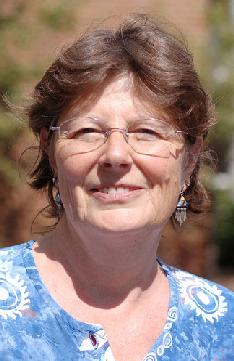September 22, 2008
Contact:
John Stoke, ALMA EPO Program Officer
(434) 244-6896
jstoke@nrao.edu
NRAO welcomes new Head of the North American ALMA Science Center
The National Radio Astronomy Observatory (NRAO) has announced the appointment of Dr. Carol Jean Lonsdale as the Observatory's new Assistant Director for the North American ALMA Science Center (NAASC). As NAASC head, Lonsdale will lead the team that will enable North American astronomers to exploit the capabilities of the Atacama Large Millimeter/submillimeter Array (ALMA), a powerful new international astronomical facility under construction in the high-altitude Atacama Desert of northeastern Chile.

CREDIT: NRAO/AUI/NSF |
"With ALMA, our understanding of such crucial processes as the formation of galaxies, stars, and planetary systems is going to take a giant leap. I look forward to leading the people here at NRAO who are working to make ALMA accessible to a wide range of science users," said Lonsdale.
Lonsdale comes to NRAO with an extensive background in overseeing large astronomical projects. She has held senior positions at the Infrared Processing and Analysis Center (IPAC) of the California Institute of Technology, where she served as Senior Research Scientist, Head of Science Staff, and Manager of the Wide-Field Infrared Explorer and Infrared Science Archive. She has been a science team member on the Infrared-Red Astronomy Satellite, Two Micron All Sky Survey, Wide-Field Infrared Survey Explorer, and other missions.
"Carol brings a new dimension to the NAASC, with broad experience in user support of space infrared missions at IPAC and world-class scientific leadership in the study of star forming galaxies," said Christopher Carilli, who headed the NAASC prior to his new appointment as NRAO Chief Scientist.
When completed in 2012, ALMA will be an array of at least 66 high-precision radio telescopes that will image faint millimeter- and submillimeter-wavelength light emitted by cold objects in the Universe, such as molecular clouds where stars are forming. It will also study warmer objects in the early Universe whose infrared light, emitted billions of years ago, has stretched into millimeter-wavelength radiation while traversing the expanding universe.
"The kinds of science that ALMA will make possible are going to attract astronomers who have never observed the universe in a millimeter-wavelength range before," said NRAO Director Fred Lo. "The techniques are very different from those of optical telescopes, but I'm confident that Carol's experience in opening up the infrared portion of the spectrum to wide exploration will serve us well as we tackle the millimeter realm with ALMA."
A short interview with Dr. Lonsdale appears in the September issue of NRAO eNews.
The ALMA Project is a partnership between the scientific communities of East Asia, Europe and North America with Chile.
ALMA is funded in North America by the U.S. National Science Foundation in cooperation with the National Research Council of Canada and the National Science Council of Taiwan. ALMA construction and operations are led on behalf of North America by the National Radio Astronomy Observatory, which is a facility of the National Science Foundation, operated under cooperative agreement by Associated Universities, Inc.
Modified on Monday, 22-Sep-2008 11:18:18 EDT